Notes from Pennsylvania Planning Comprehensive Planning Examination Study Notes 2007
Part One: Planning Theory
I. Planning History
A. Timeline of American Planning History
-
-
- PREPARING FOR A PROFESSION
- FOUNDATIONS FOR A PROFESSION
- BUILDING A PROFESSION
- REFINING THE PROFESSION
-
2. FOUNDATIONS FOR A PROFESSION
1900’s: Progressive Era (1896-1920’s)
1901 New York State Tenement House Act. The legislative basis for the revision of city codes that outlawed tenements such as the “Dumbbell Tenement.” Lawrence Veiller was the leading reformer. Housing Event Other Legal Action
1902 U.S. Reclamation Act. Created fund from sale of public land in the arid states to supply water there through the construction of water storage and irrigation works. Conservation & Environment Landmark Laws Economic Development Event
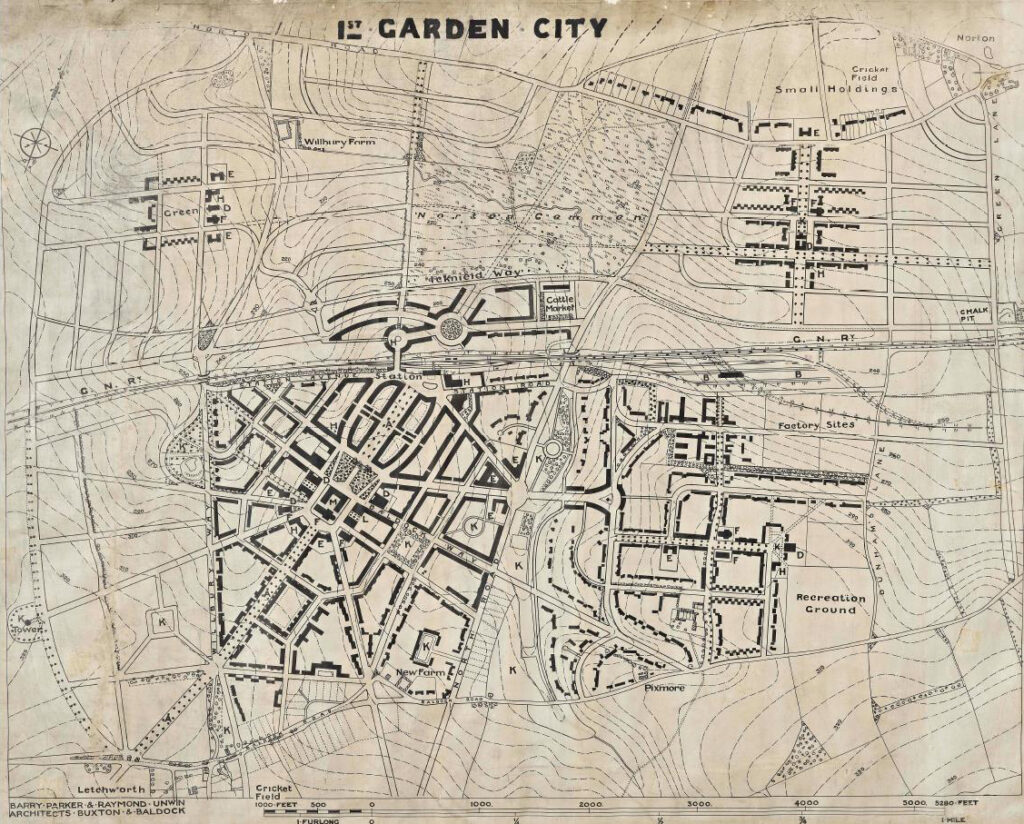
1903 Ebenezer Howard’s Letchworth Garden City is constructed in England. It’s the first English Garden City and a stimulus to New Town Movement in America (Greenbelt Towns, Columbia, etc.) Planned Communities
1903 President Theodore Roosevelt appoints a Public Lands Commission to propose rules for orderly land development and management. Conservation & Environment Other Legal Action

1904 Louisiana Purchase Exposition was held in Saint Louis for the World Expo.

1906 Antiquities Act of 1906: First law to institute federal protection for preserving archaeological sites. Provided for designation as National Monuments areas already in the public domain that contained “historic landmarks, historic and prehistoric structures, and objects of historic or scientific interest.” Conservation & Environment Landmark Laws
1907 Founding of New York Committee on the Congestion of Population. Fostered movement, led by its secretary, Benjamin Marsh, to decentralize New York’s dense population. Housing Event
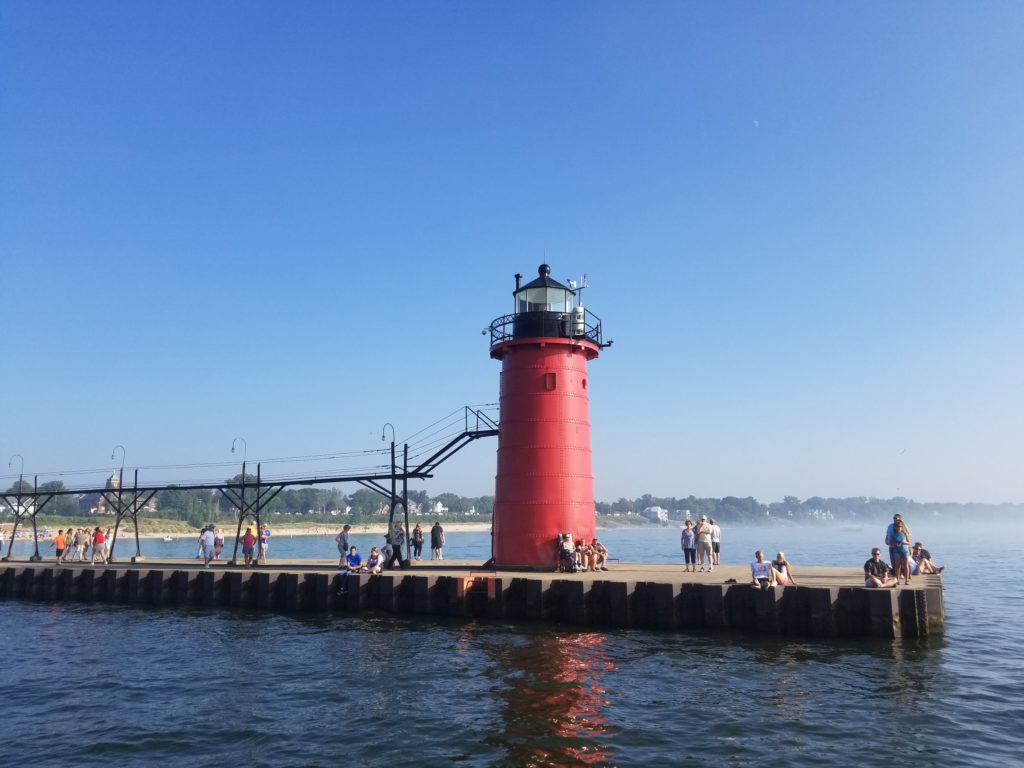
1907 President Theodore Roosevelt establishes an Inland Waterway Commission to encourage multipurpose planning in waterway development: navigation, power, irrigation, flood control, water supply. Conservation & Environment Other Legal Action

1908 Henry Ford’s Ford Motor Company innovates the assembly line to manufacture first Model T Fords, starting vehicle mass production, beginning the Automobile Age.
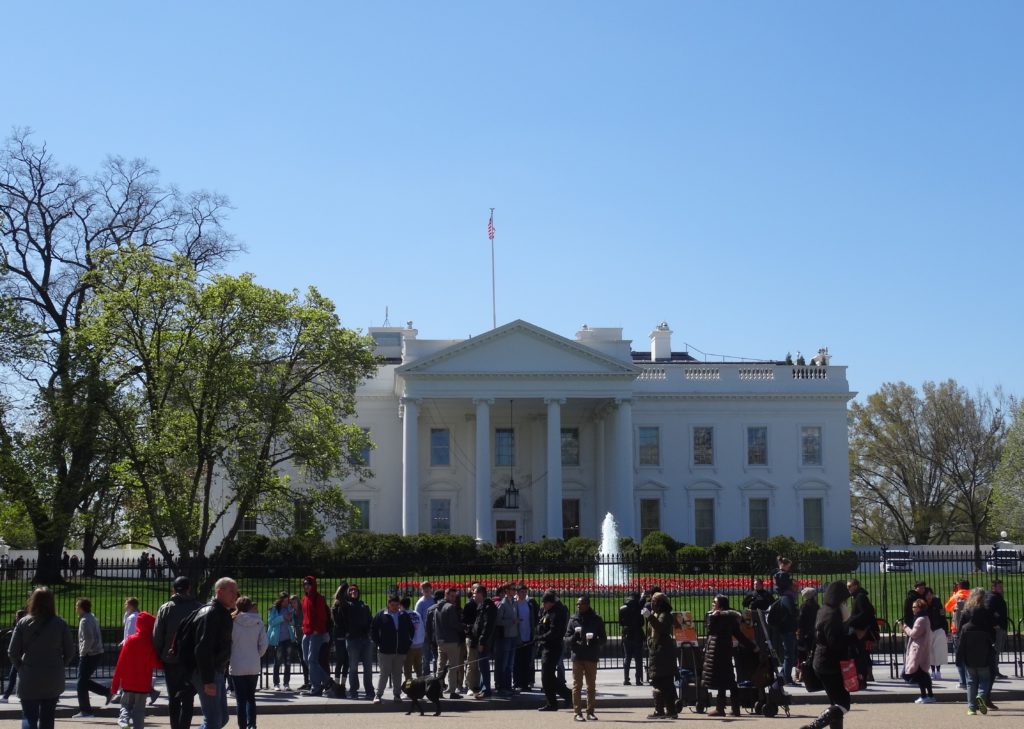
1908 White House Conservation Conference. State governors, federal officials, and leading scientists assemble to deliberate about the conservation of natural resources. Conservation & Environment
1909 Benjamin Marsh organized the First National Conference on City Planning in Washington, D.C., adding social considerations to city planning, especially overcrowding impacts. Marsh also supported Henry George’s Progress and Poverty (geoism), the idea that a land tax needed is needed to collect the value of the commons from the land as an economic rent, and left the value of the development to the developer. History of Planning Profession
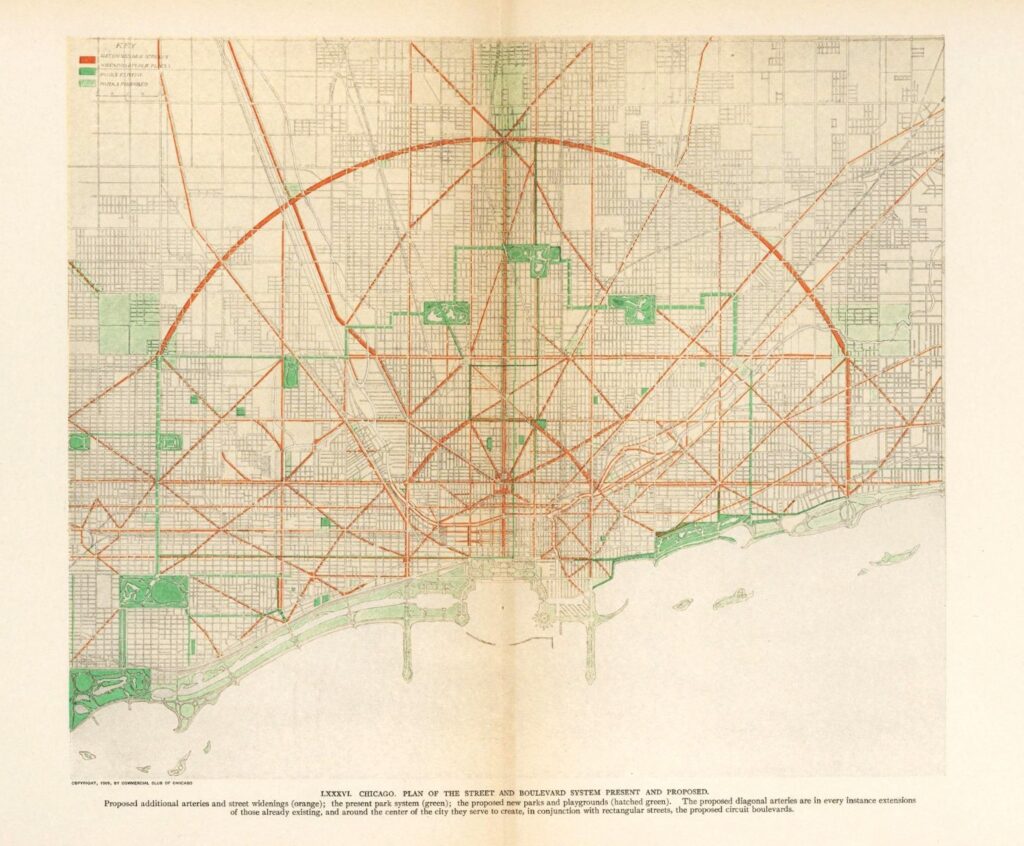
1909 Daniel Burnham’s Plan of Chicago published. First metropolitan plan in the United States. (Key figures: Frederick A. Delano, Charles Wacker, Charles Dyer Norton.) Landmark Publication Regional Planning Event
1909 Possibly the first course in city planning in this country is inaugurated in Harvard College’s Landscape Architecture Department. Taught by James Sturgis Pray. History of Planning Profession
1909 In Welch v. Swasey, the U.S. Supreme Court upholds municipal regulation of building heights. This validated the use of construction standards to uphold public safety. U.S. Supreme Court Case
1910’s: World War I Era & Automobile Age Begins
1911 Frederick Winslow Taylor’s The Principles of Scientific Management is fountainhead of the efficiency movements in this country, including efficiency in city government. Landmark Publication
1912 Walter D. Moody’s “Wacker’s Manual of the Plan of Chicago” is adopted as an eighth grade textbook on City Planning by the Chicago Board of Education. Possibly the first formal instruction in city planning below the college level. Landmark Publication History of Planning Profession
1913 Charles Mulford Robinson is the first Chair in Civic Design (first of its kind in the U.S.), at the University of Illinois’s Department of Horticulture. He is one of the principal promoters of the World’s Columbian Exposition. History of Planning Profession
1914 Flavel Shurtleff and Frederick Law Olmstead’s Carrying Out the City Plan is the first major textbook on city planning. Landmark Publication History of Planning Profession
1914 Panama Canal completed and opened to world commerce. Economic Development Event

1915 Panama–Pacific International Exposition was held in San Francisco as the World Expo, celebrating the Inauguration of the Panama Canal.
1914 Harland Bartholomew, eventually the country’s best known planning consultant, becomes the first full-time employee in Newark, New Jersey, of a city planning commission. History of Planning Profession
1915 In Hadacheck v. Sebastian, the U.S. Supreme Court upheld a municipal regulation that governed the placement of land uses. U.S. Supreme Court Case
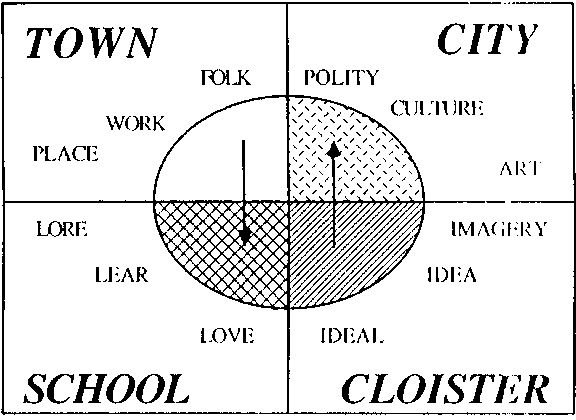
1915 Patrick Geddes’s Cities in Evolution is published. Geddes is considered the “Father of Regional Planning”. He is a mentor of Lewis Mumford. Seminal Publication Regional Planning Event
1916 Nelson P. Lewis’s Planning of the Modern City is published. Landmark Publication History of Planning Profession
1916 Nation’s first comprehensive zoning resolution adopted by New York City Board of Estimates under the leadership of George McAneny and Edward Bassett, known as the “Fathers of Zoning.” Housing Event Other Legal Action
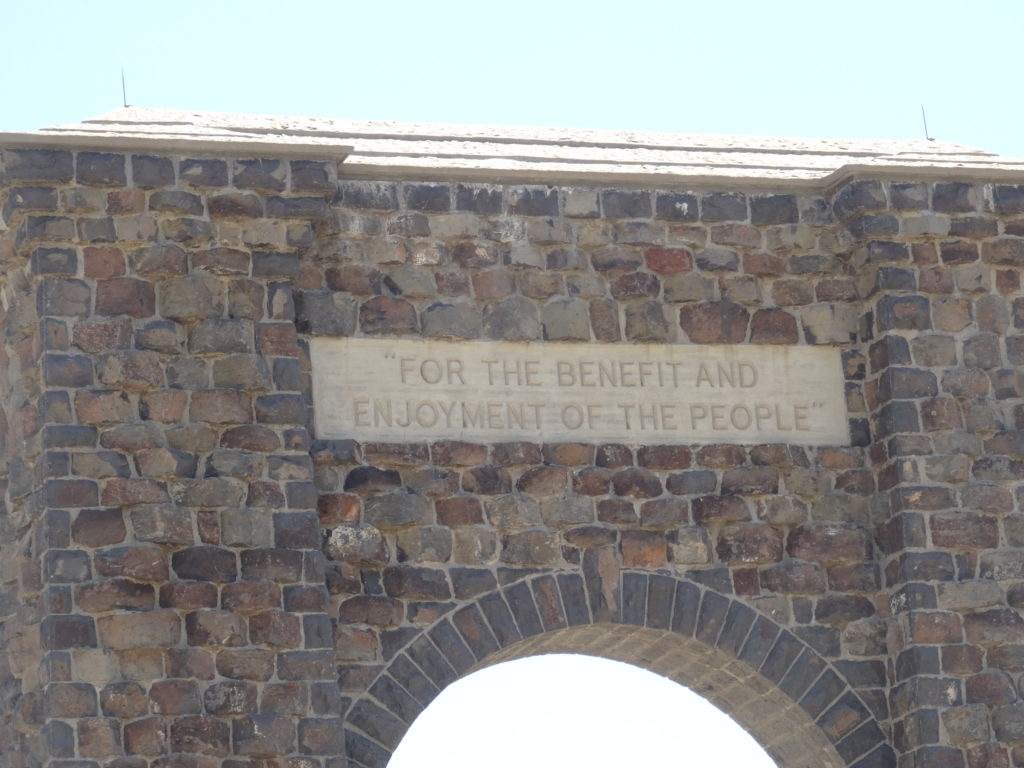
1916 National Park Service established with sole responsibility for conserving and preserving resources of special value. Conservation & Environment Landmark Laws
1917 Frederick Law Olmsted, Jr. becomes first president of newly founded American City Planning Institute, forerunner of American Institute of Planners and American Institute of Certified Planners. History of Planning Profession
1918 U.S. Housing Corporation and Emergency Fleet Corporation established. Influenced later endeavors in public housing. Operated at major shipping centers to provide housing for World War I workers. Housing Event Landmark Laws
1919 Three early unifunctional regional authorities–the Metropolitan Sewerage Commission, the Metropolitan Water Board and the Metropolitan Park Commission– combined to form the Boston Metropolitan District Commission. Regional Planning Event
1920’s: The Roaring Twenties & Prohibition
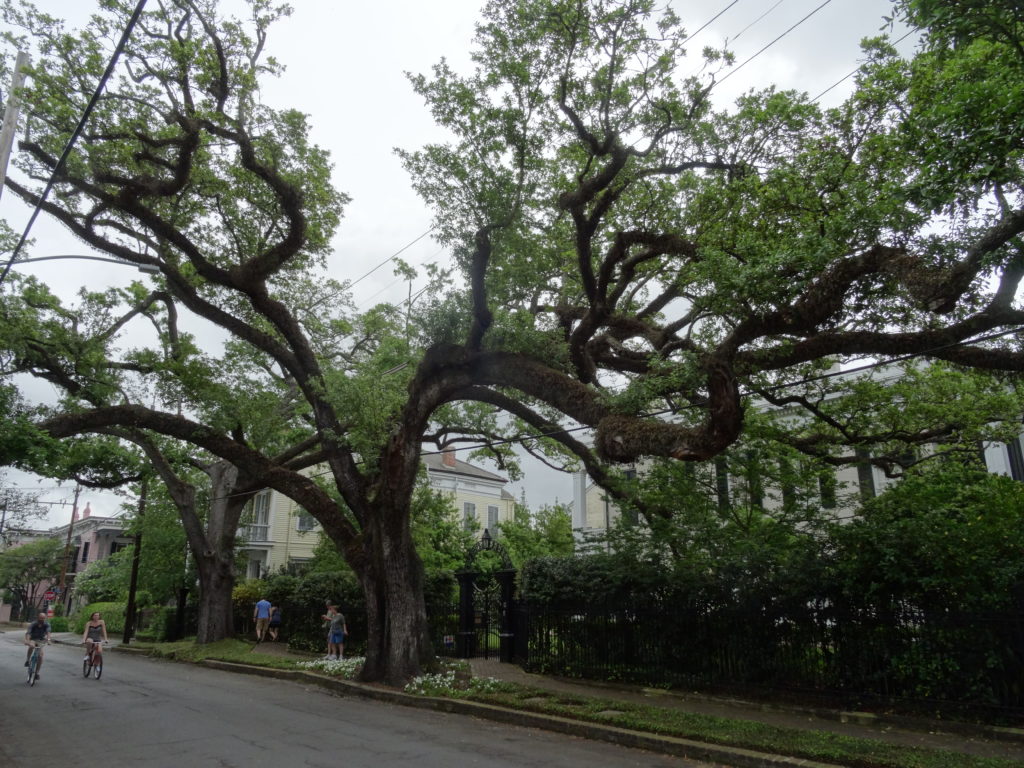
1921 New Orleans designates the Vieux Carre Commission, the first historic preservation commission in the U.S. Conservation & Environment
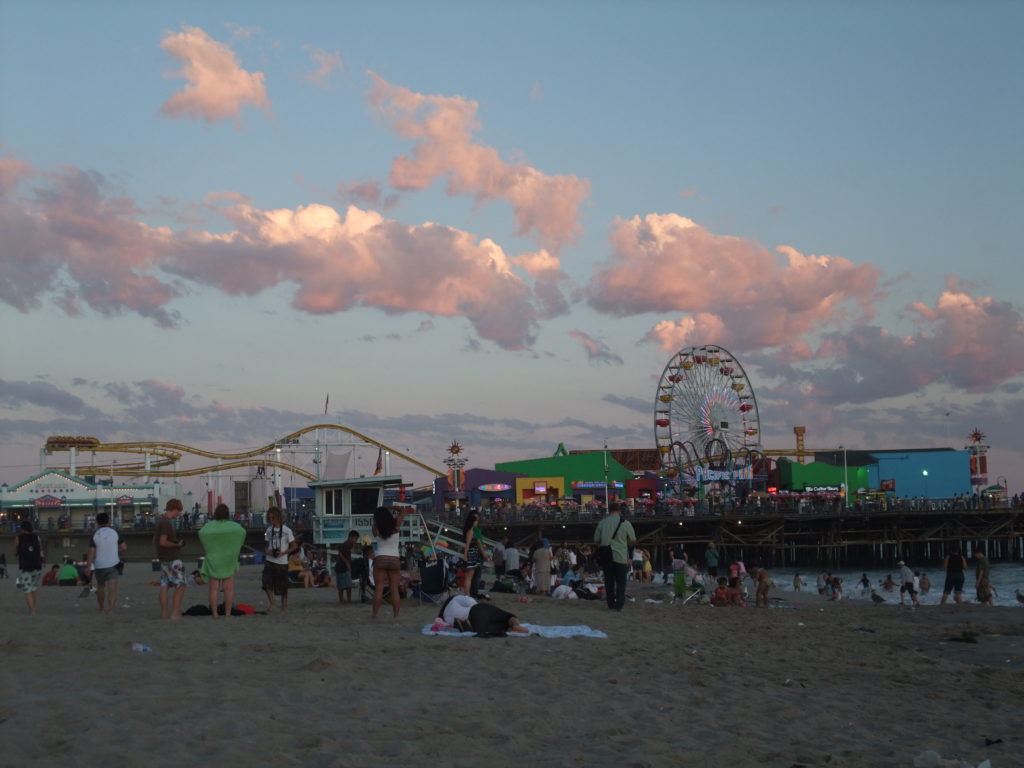
1922 Los Angeles County Regional Planning Commission created. First of its kind in the United States. (Hugh Pomeroy, head of staff.) History of Planning Profession Regional Planning Event
1922 Inauguration of Regional Plan of New York under Thomas Adams. The purpose of the First Regional Plan was to guide the development of the New York metropolitan area and enhance the quality of life of residents, without regard to political boundaries. Regional Planning Event
1922 In Pennsylvania Coal Co. v. Mahon, the U.S. Supreme Court (Justice Brandeis dissenting) noted “property may be regulated to a certain extent, [but] if regulation goes too far it will be recognized as a taking,” thus acknowledging the principle of a “regulatory taking.” It is the first decision to hold that a land use restriction constituted a taking. U.S. Supreme Court Case

1922 The Country Club Plaza in Kansas City, Missouri opens as the nation’s first outdoor shopping mall. Economic Development Event
1923 Ground broken for construction of Mariemont, Ohio, in suburban Cincinnati. Mary Emery was its founder and benefactor; John Nolen, the planner. Some of its features (short blocks, mixture of rental and owner-occupied housing) foreshadow the contemporary New Urbanism movement. Planned Communities
1924 U.S. Department of Commerce under Secretary Herbert Hoover issues a Standard State Zoning Enabling Act. Other Legal Action
1924-28 Sunnyside Gardens, Queens, New York City, a planned neighborhood designed by Clarence Stein and Henry Wright, is built by City Housing Corporation under Alexander Bing. Planned Communities
1925 Publication of “Regional Plan” issue of Survey Graphic, influential essays on regional planning by Lewis Mumford and other members of the Regional Planning Association of America (e.g., Catherine Bauer). Landmark Publication Regional Planning Event
1925 Cincinnati, Ohio, becomes first major American city officially to endorse a comprehensive plan. (Alfred Bettman, Ladislas Segoe). History of Planning Profession
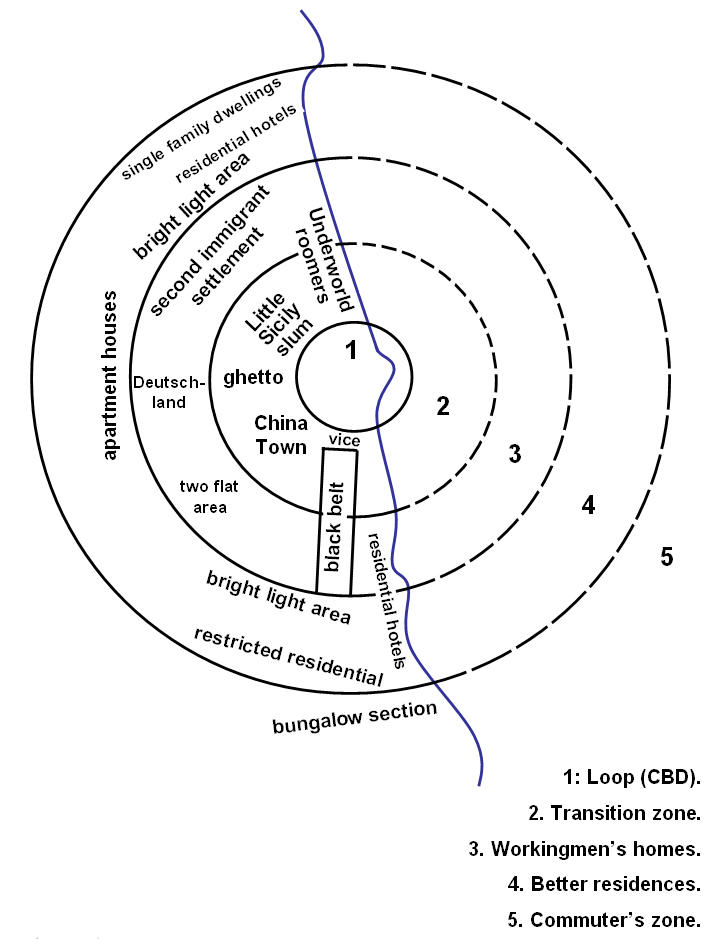
1925 Ernest Burgess’s “Concentric Zone” model of urban structure and land use is published. Seminal Publication
1925 The American City Planning Institute and The National Conference on City Planning publish Vol. 1, No. 1 of City Planning, ancestor of present-day Journal of the American Planning Association. Landmark Publication History of Planning Profession
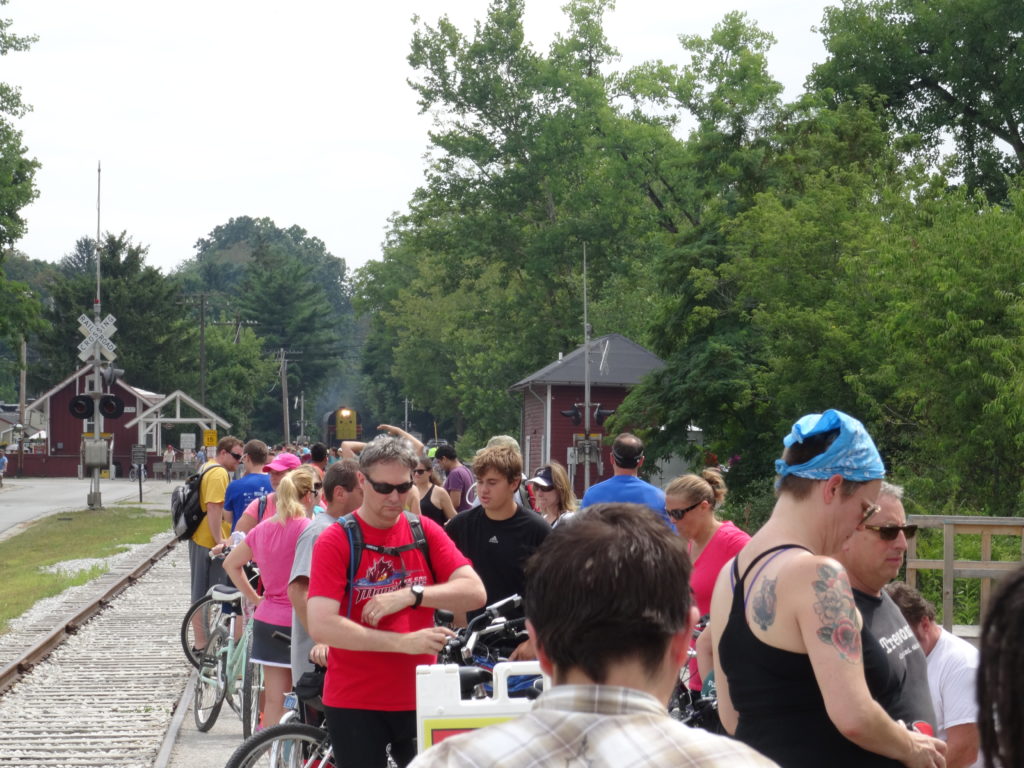
1926 In Village of Euclid v. Ambler Realty, the U.S. Supreme Court upholds the constitutionality of zoning. Village of Euclid is a suburb of Cleveland, Ohio. (Case argued by Alfred Bettman.) U.S. Supreme Court Case
1928 U.S. Department of Commerce under Secretary Herbert Hoover issues a Standard City Planning Enabling Act. Other Legal Action History of Planning Profession
1928 Robert Murray Haig’s monograph “Major Economic Factors in Metropolitan Growth and Arrangement” is published in Volume I of The Regional Survey of New York and Its Environs. Viewed land use as a function of accessibility. Landmark Publication Regional Planning Event
1928 In Nectow v. City of Cambridge, the U.S. Supreme Court struck down as unconstitutional a local zoning ordinance that was not reasonably tied to a valid public purpose under the police power. U.S. Supreme Court Case
1928 Construction of Radburn, New Jersey, begun. Planned community inspired by Howard’s Garden City concept and designed by Stein and Wright. A forerunner of the New Deal’s Greenbelt towns. Planned Communities
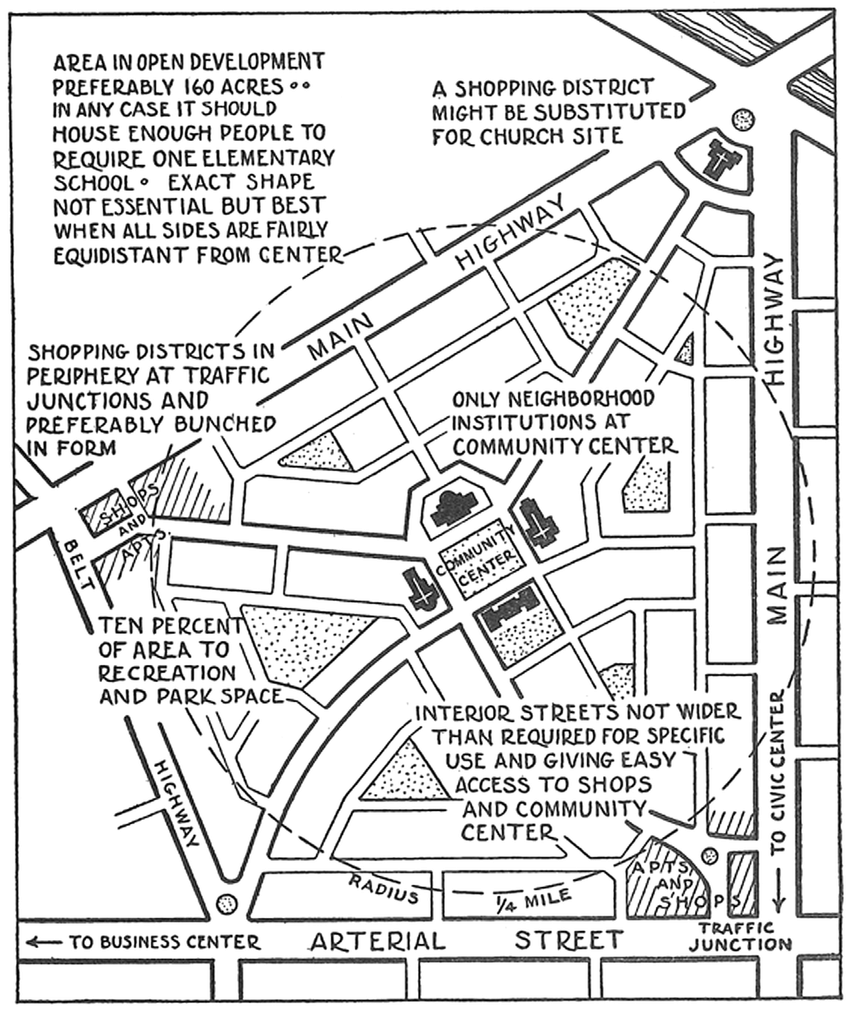
1929 Clarence Perry’s “The Neighborhood Unit” is published in Volume VII of The Regional Survey of New York and Its Environs. Seminal Publication Planned Communities

1929 Wisconsin law, first instance of rural zoning, authorized county boards “to regulate, restrict and determine the areas within which agriculture, forestry and recreation may be conducted.” Other Legal Action
1929 Stock market crash in October ushers in Great Depression and fosters ideas of public planning on a national scale. Economic Development Event
-
- PREPARING FOR A PROFESSION
- FOUNDATIONS FOR A PROFESSION
- BUILDING A PROFESSION
- REFINING THE PROFESSION
